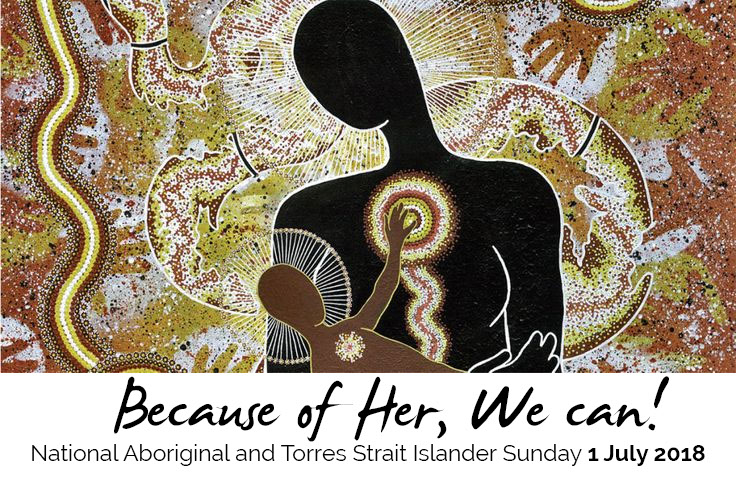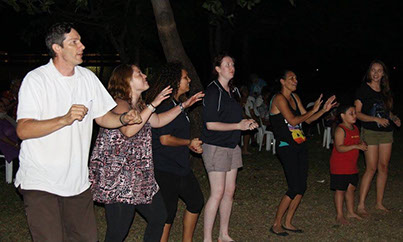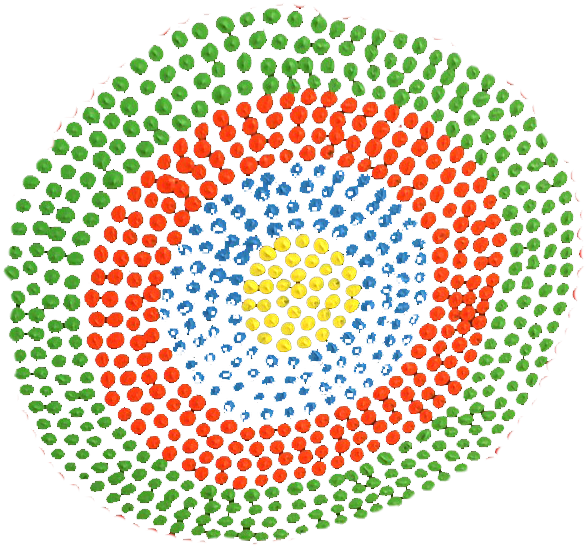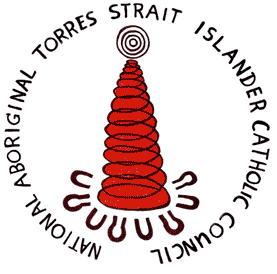
National Aboriginal and Torres Strait Islander Catholic Council

This year NATSICC is offering two sets of liturgical resources. One for parish worshipping communities and another for assemblies where the majority of worshippers are Aboriginal or Torres Strait Islanders.
The following ceremonies are ways that Aboriginal and Torres Strait Islander communities enhance and enrich the Liturgy, bringing the gift of culture and tradition to the Catholic Church in Australia. Please follow the suggestions given. NATSICC advises that you work closely with your Parish Priest and Liturgical team to ensure the suggestions conform with the Liturgical norms of the Roman Missal.
Readings
FIRST READING Wisdom 1:13-15; 2:23-24 It was the devil’s envy that brought death into the world.
Responsorial Psalm Ps 29:2. 4-6, 11-13.R v.2
SECOND READING St Paul to the Corinthians 8.7 9 1315 Your abundance should supply their want.
Gospel Acclamation cf. 2 Tim 1:10 Alleluia, alleluia! Our Saviour Jesus Christ has done away with death and brought us life through his gospel. Alleluia!
GOSPEL Mark 5:21-43 Young girl, I say to you, arise.
Prayers of Intercession
Hymns
Entrance Hymn: Holy God we Praise thy name (AOV2:129)
Communion: We Remember (AOV 81), Like a Shepherd (AOV 160)
Offertory: I have seen the Lord (AOV 98), The Cry of the Poor (AOV 83)
Recessional: All the ends of the Earth (AOV 76)
Links
Liturgical Resources for Mass for non Indigenous Communities
Homily Notes by Fr James McEvoy
Aboriginal and Torres Strait Islander Congregations
Welcome/acknowledgment of country might include:
Today, on Aboriginal and Torres Strait Islander Sunday we celebrate the contributions that we Aboriginal and Torres Strait Islander brothers and sisters, and all who have gone before us, gift to our Australian Catholic Church. Our culture, spirituality and commitment to Jesus Christ
is a shining example of God’s love and wonder.
Smoking Ceremony
An elder could smoke the community and the precious objects – altar, place of the word, cross – at the beginning of the Mass.
A Rite of Water Blessing
Alternatively, if more appropriate, a water blessing could be used.
A suggested text for this blessing is:
Lord, make us feel your invitation to ‘come to the water’. At the very beginning you blessed the water, your great gift to us, and now we ask that your blessing be renewed in this water here today. We ask that through this water blessing we will all be renewed with Water to Aboriginal people is always a sign of God’s peace and fulfilment in everything that is good; the promise of food, of your love, and protection, and your power to love one another as true Christians. Lord, this truly is a sign of the new life in Christ, which in Baptism we have all received.
The priest may add to this water blessing.
Water containers can be a large shell or coolamon and a branch from an appropriate native tree can be used to sprinkle the water.
Gospel Procession
In the spirit of our ancestors the Message Stick can be carried forward with the Gospel Book. Other symbols and actions are used according to local practice. Traditional dance and instruments may also accompany a procession of the Word.
Prayers of Intercession
These could be prepared by the community beforehand, or prayed during the mass spontaneously.
Presentation of gifts
The bread to be used for consecration might be carried to the altar in a coolamon. Other gifts such as a boomerang, woomera, Indigenous painting, clap sticks might be presented. Gifts of food etc. to share with others might also be presented. All gifts given at Mass are intended to be given to the poor; they would not be returned to the giver but shared with others.
Eucharistic prayer
Eucharistic prayers for masses with children, masses for reconciliation, or one of the Eucharistic prayers for special needs and occasions might be used.
ABORIGINAL OUR FATHER
Please contact the Broome Diocese for permission to use this prayer
You are our Father, you live in heaven,
We talk to you. Father you are good.
You are our Father, you live in heaven,
We talk to you. Father you are good.
We believe your word, Father,
We are your children, give us bread today.
We believe your word, Father,
We are your children, give us bread today.
We have done wrong, we are sorry,
Teach us, Father, all about your Word.
We have done wrong, we are sorry,
Teach us, Father, all about your Word.
Others have done wrong to us,
And we are sorry for them, Father, today.
Others have done wrong to us,
And we are sorry for them, Father, today.
Stop us from doing wrong, Father,
Save us all from the evil one.
Stop us from doing wrong, Father,
Save us all from the Evil One.
You are our Father, you live in heaven,
We talk to you, Father, you are good.
You are our Father, you live in heaven,
We talk to you, Father, you are good
Language
Careful consideration needs to be given to determine which elements in the language of the people can be properly introduced into Liturgical celebrations. The suggestions below would be most appropriate to worshiping communities where traditional languages are predominantly used. In other congregations, perhaps a word or phrase in local language could be included with the permission of local Aboriginal speakers.
How Language can be used:
• The readings can be read in Language from a recognised scripture translation.
• 1 or more of the Prayers of the Faithful can be in Language – as above.
• Stanzas of a hymn can be translated into Language – as above.
Music / song / dance
Music and singing, which express the soul of the people, have pride of place in theliturgy. Music forms, melodies and musical instruments could be used in divine worship as long as they are suitable or can be made suitable, for sacred use, and provided they are in accord with the dignity of the place of worship and truly contribute to the uplifting of the faithful.
• Didge and clapsticks can accompany the choir.
• Didge and clapsticks together with other instruments can be used for reflective music.
• A hymn can be sung in language. If a stanza of a hymn is translated it should be able to be used at an appropriate time in the liturgy.
• Dance can be incorporated into the liturgy, especially as a procession – entrance, book, or gifts.
Actions
The gestures and postures of the assembly are signs of its unity and express its active participation and foster the spiritual attitude of the participants.
Non Indigenous Congregations
There are over 120,000 Aboriginal and Torres Strait Islander Catholics in Australia, however your Parish may not have our people present. The following suggestions may be useful in preparing to celebrate Aboriginal and Torres Strait Islander Sunday and to remember Aboriginal and Torres Strait Islander people in your thoughts and prayers on this day.
Connecting with your local Aboriginal and Torres Strait Islander community
To enhance your liturgy, and to avail your Parishioners of the gifts of Aboriginal and Torres Strait Islander people, NATSICC suggests that you
involve your local Aboriginal or Islander Catholic Ministry (AICM) in planning your celebration.
Visit www.natsicc.org.au and go to ‘About NATSICC’ and click on your State or Territory to find your local AICM. These ministries work very hard to serve local Indigenous Catholics and do a lot of good in the community. You may be able to work together in preparing the Liturgy, sourcing speakers or presenters or learning more about Aboriginal and Torres Strait Islander Catholics in your area and ultimately build a relationship that will benefit the Parish.
Introduction
Today is the 13th Sunday in Ordinary Time and the day that the Australian Bishops have invited us to celebrate Aboriginal and Torres Strait Islander Sunday. Today we acknowledge that God has been walking with Aboriginal and Torres Strait Islander peoples, making his presence known through a continuous living culture over many thousands of years. We pray in thanksgiving for these ancient peoples who have enriched and sustained our continent over all that time. In particular we praise God for the people who nurtured the land here in our parish that we call home.
Rite for Blessing and sprinkling of water may be used in place of the Penitential Rite on this day
(appendix 2 roman missal)
Vessel used to carry the water might be a coolamon
Suggested introduction to the rite:
PRIEST: Dear sisters and brothers, let us ask our ever-living God to bless this gift of creation, this living water, that has nourished people of this land since the dreaming and will now be sprinkled on us as a memorial of our Baptism. May God bless us with the grace to remain faithful to the Spirit we have received.
Gifts Procession
Besides bread and water for the Eucharist, gifts of food or a special collection could be brought forward for use by needy aboriginal people. A coolamon could be placed in front of the altar as a symbol of the absence of Aboriginal and Torres Strait Islander brothers and sisters at the table.
Eucharistic Prayer
Eucharistic Prayer for Reconciliation II
If some Aboriginal or Torres Strait Islander people are present at the parish Eucharist other cultural elements could be included.
Music
Perhaps before Mass begins, or during the gifts procession, a recording of instrumental Aboriginal music (didgeridoo, clapsticks) might be played.


National Aboriginal and Torres Strait Islander Catholic Council
'The peak Indigenous advisory body to the Catholic Church'
80C Payneham Rd.
Stepney SA 5069
www.natsicc.org.au | craig@natsicc.org.au | 08 8363 2963
